Everyone knows that last one, I thought. I intended to leave it out, but when I went to my dictionaries online, I found something I’d never heard of before.
Photo source: https://www.youtube.com/watch?v=jHs5POy8-8Y

Meet the Aye-aye!
When the Aye-aye was discovered in the early 1800s, scientists thought it was an unusual type of large rodent related to the squirrel because the aye-aye’s incisors grow continuously throughout life like a rodent.
Subsequently, the animal was believed to have become extinct. Rediscovered in 1957, scientists decided it was a rare type of lemur found only in remote locations in the dense, tropical rainforests Madagascar’s eastern coast. The nocturnal primate, now, has come into its own and is recognized as the only species in its own taxonomic family: Daubentoniidae aye-aye
The creature is highly endangered in Madagascar and, in the United States, there are only 24 living in seven zoos.YOU AIN’T NO BEAUTY QUEEN YOURSELFAbout a year ago, in September 13, 2018, the Denver Post ran this headline.
“Denver Zoo welcomes rare, ugly ‘Omen of Evil’ baby animal into its flock – Tonks, the aye-aye,
is the newest member of one of the rarest animal species in the world.”
Not a complimentary introduction to the world but others, along with the Denver Post, identify the aye-aye as one of the ugliest animals in existence, including native groups in Madagascar who consider sighting an aye-aye as an omen of evil. Based on the photographs following, I understand the reaction.
Photo Source: www.denverpost.com/2018/09/tonks-aye-aye/ Photo Source: https://www.factzoo.com/ Photo Source: petrovich7777.artstation.com/projects
This is Stan in costume. This is Agatha, who was named after Agatha Christi
Physically, the aye-aye is a distinctive animal with some unusual characteristics, including a long, bony middle finger used to pry insects from tree trunks. They serve a biological niche similar to that of woodpeckers.
Photo Source: https://www.sciencenews.org/article/fossil-lemur-aye-aye-bat-madagascar
The fur is long, woolly, and dark brown in color. The combination of bushy tail and woolly fur gives the animal a sort of unkempt, shaggy appearance. Aye-ayes have large, naked, mobile ears, a muzzle that is shorter than that of most lemurs and large protruding eyes with yellowish brown irises adapted to its nocturnal life style.
Color: Black, dark brown
Skin Type: Fur
Size: 12 to 16” in length plus a bushy take extending another 18 to 22
Weight: 4 to 6 pounds
Top speed: 20 miles per hour
Life span: 23 years
The aye-aye is a solitary animal and lives alone unless it is a mother with a baby or a mating pair. Females take care of their babies, carrying them on her back until they are 13 months.
Despite being loaners, they interact peacefully with one another (except during the mating season) and they hardly ever defend their territory by fighting. The aye-aye marks its territory with the scent glands on its cheeks and neck. The scent repels intruders.
ENDANGERED EXISTENCE
In Madagascar it is believed that there is an “evil spirit” within the animal and that an aye-aye can curse a person by pointing at them with its unique finger. This led to many of them being killed on sight. The loss of habitat and hunting are the main threats to the survival of the aye-aye on this large island.
□
Sources:
https://a-z-animals.com/animals/aye-aye/
https://animaldiversity.org/accounts/Daubentoniidae/
https://www.denverpost.com/2018/09/13/denver-zoo-baby-tonks-aye-aye/
https://www.sciencefocus.com/nature/what-is-an-aye-aye/
https://www.boredpanda.com/unusual-animals/?utm_source=bing&utm_medium=organic&utm_campaign=organic
https://petrovich7777.artstation.com/projects/JqgoA?album_id=634484
https://www.factzoo.com/worlds-ugliest-animals.html
https://www.sciencenews.org/article/fossil-lemur-aye-aye-bat-madagascar
https://lemur.duke.edu/discover/meet-the-lemurs/aye-aye/
https://psmag.com/social-justice/this-lemur-is-not-a-demon-but-man-that-finger-is-creepy
https://www.zooborns.com/zooborns/aye-aye/
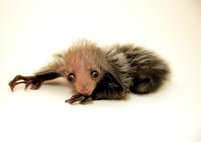
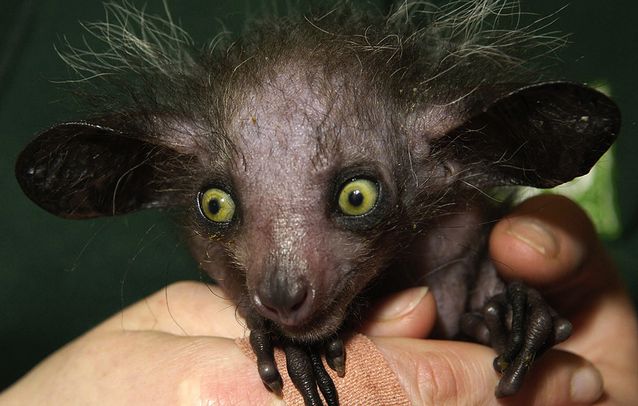
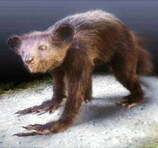

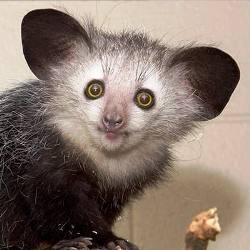
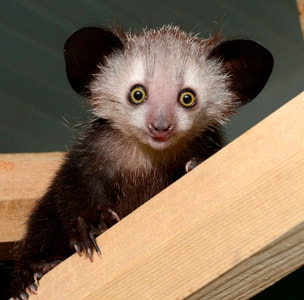
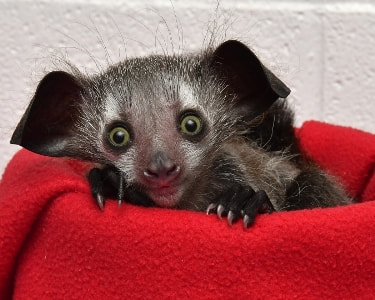
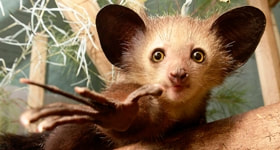
 RSS Feed
RSS Feed